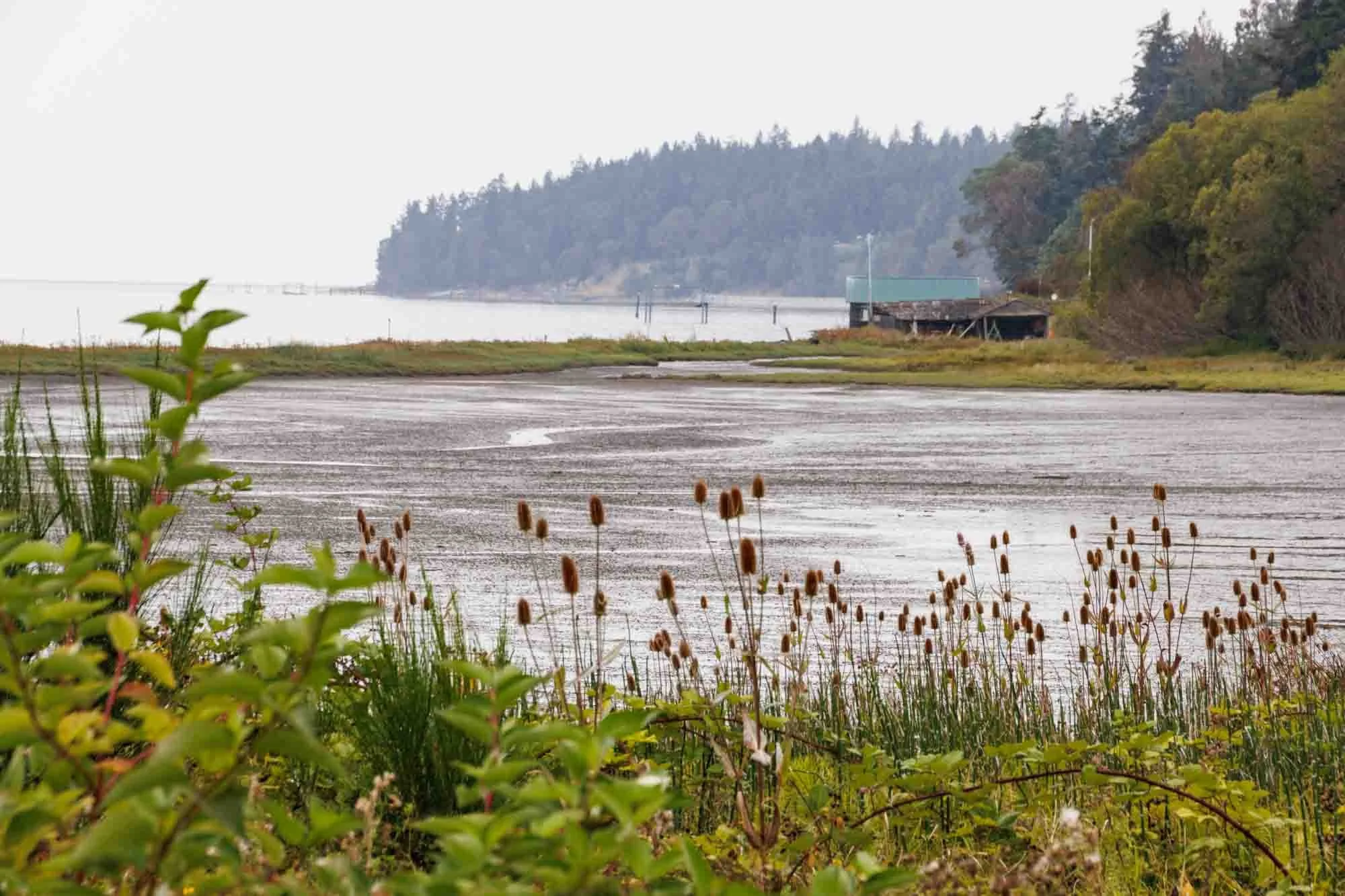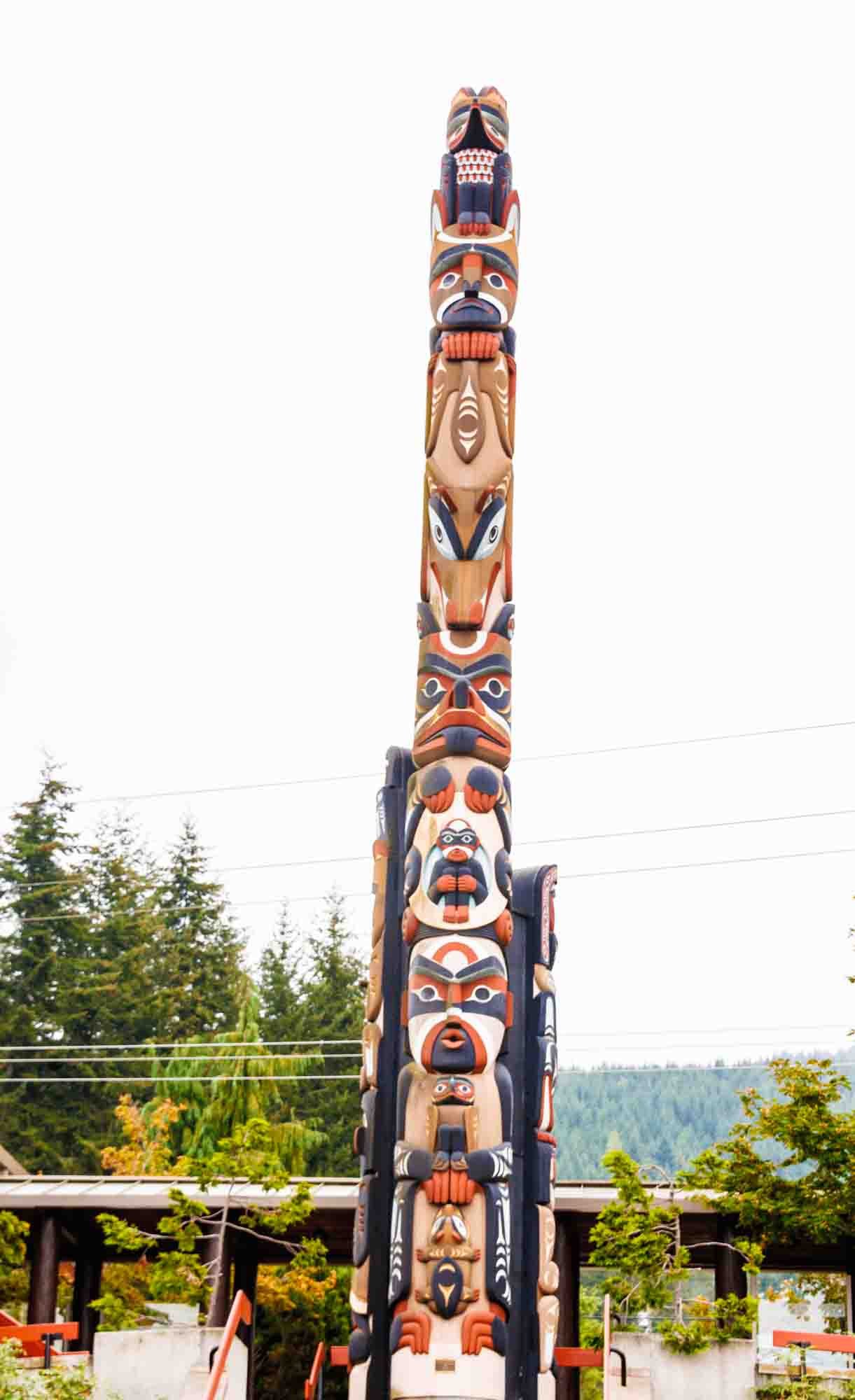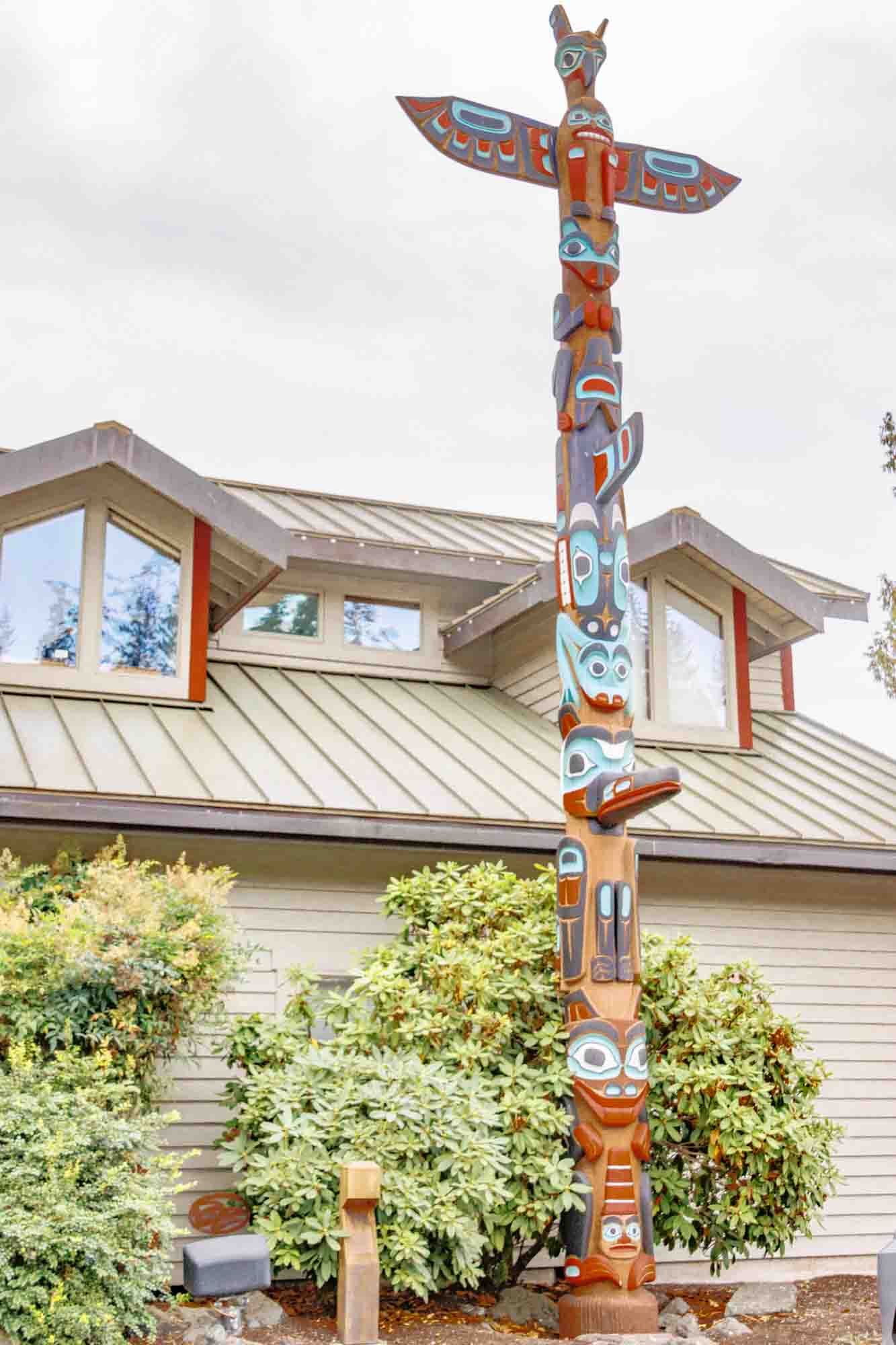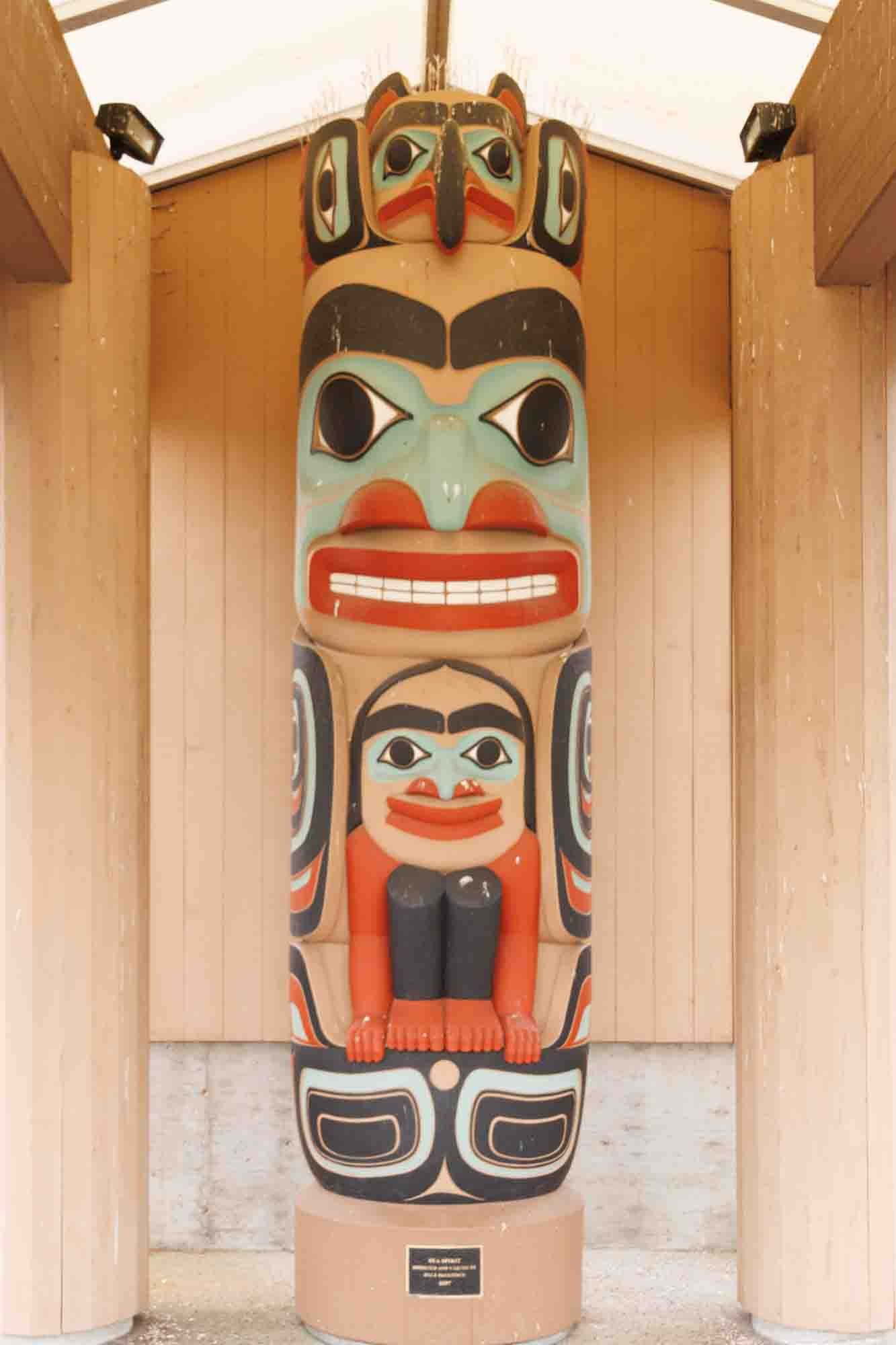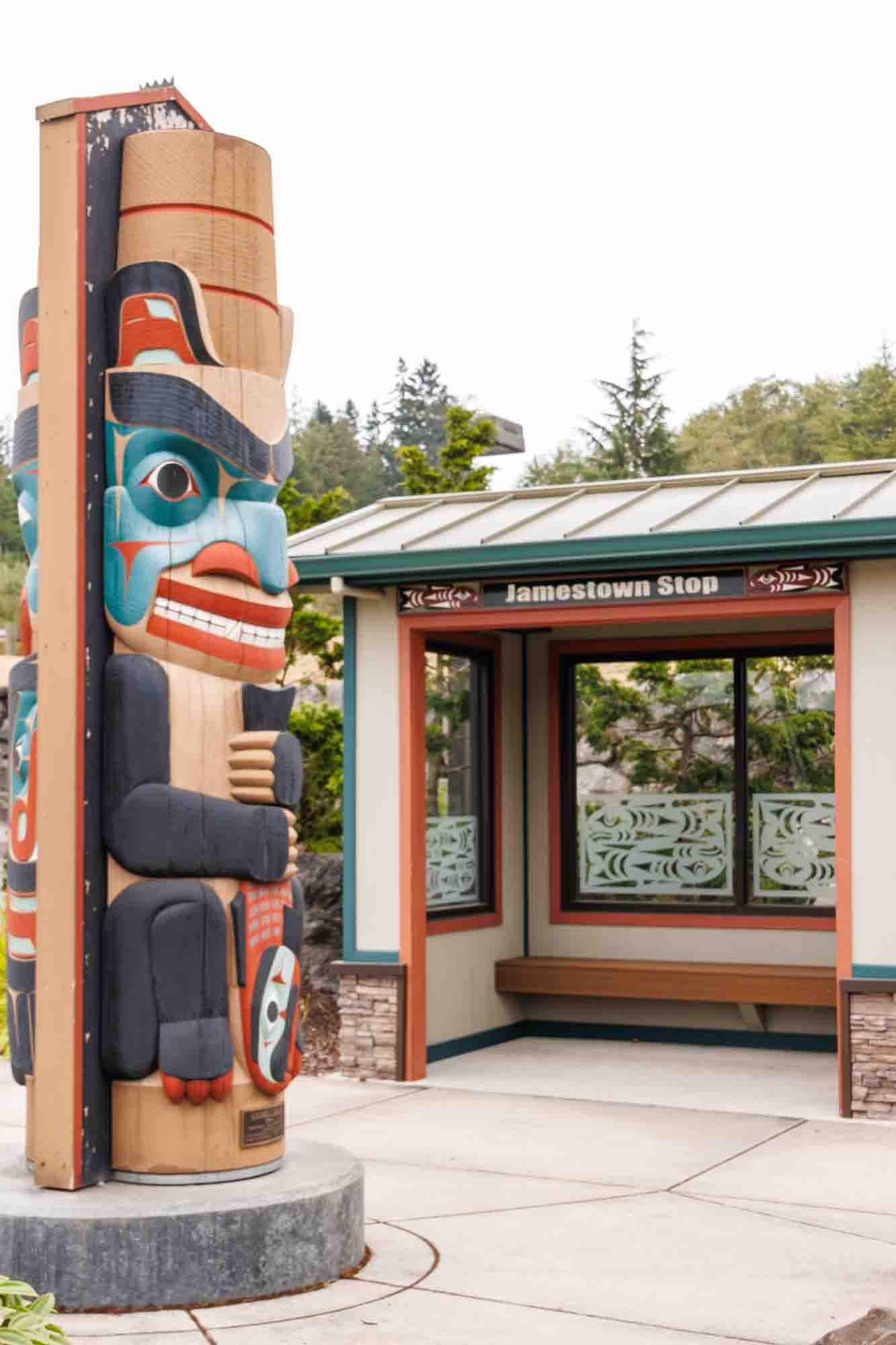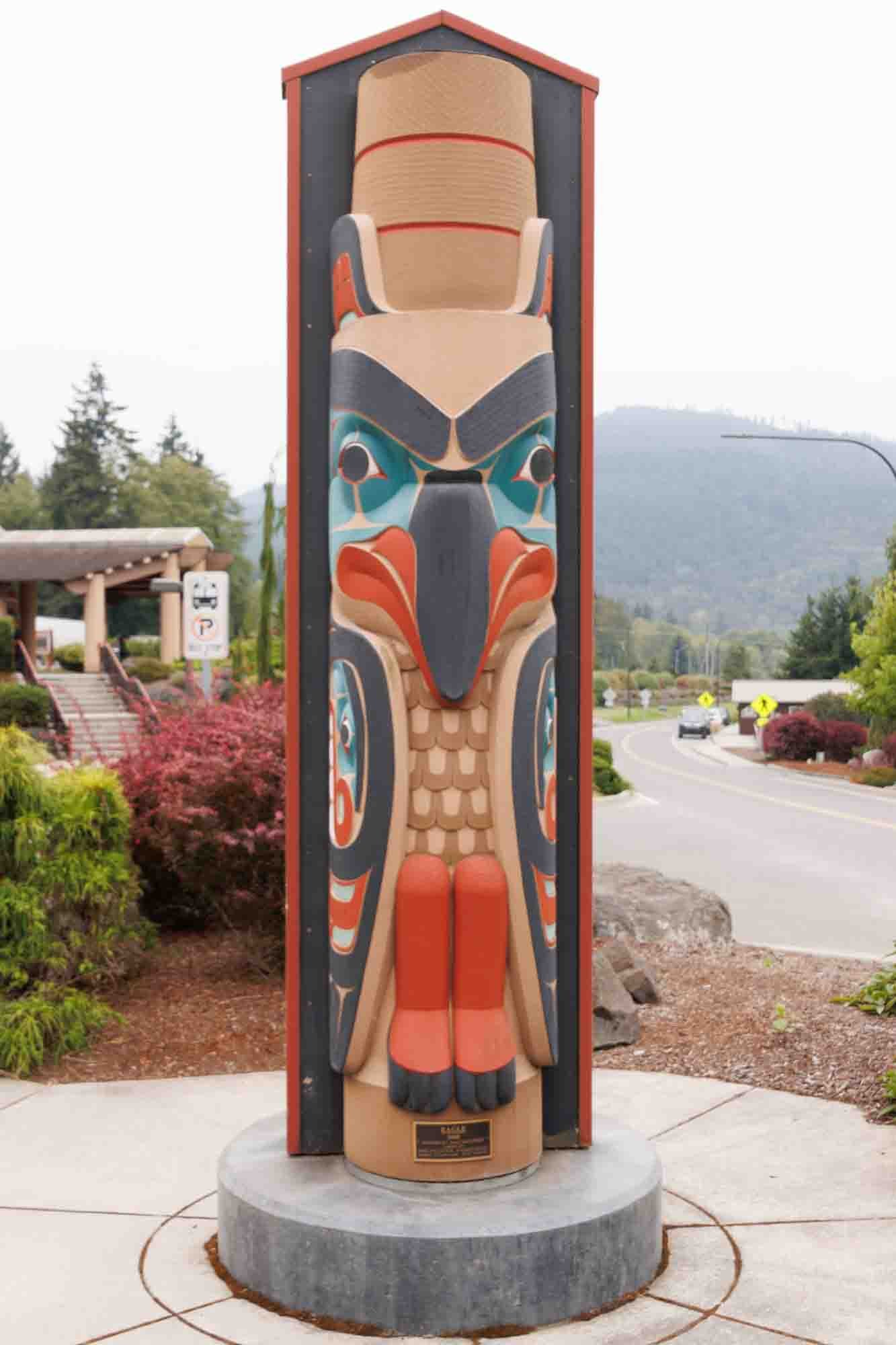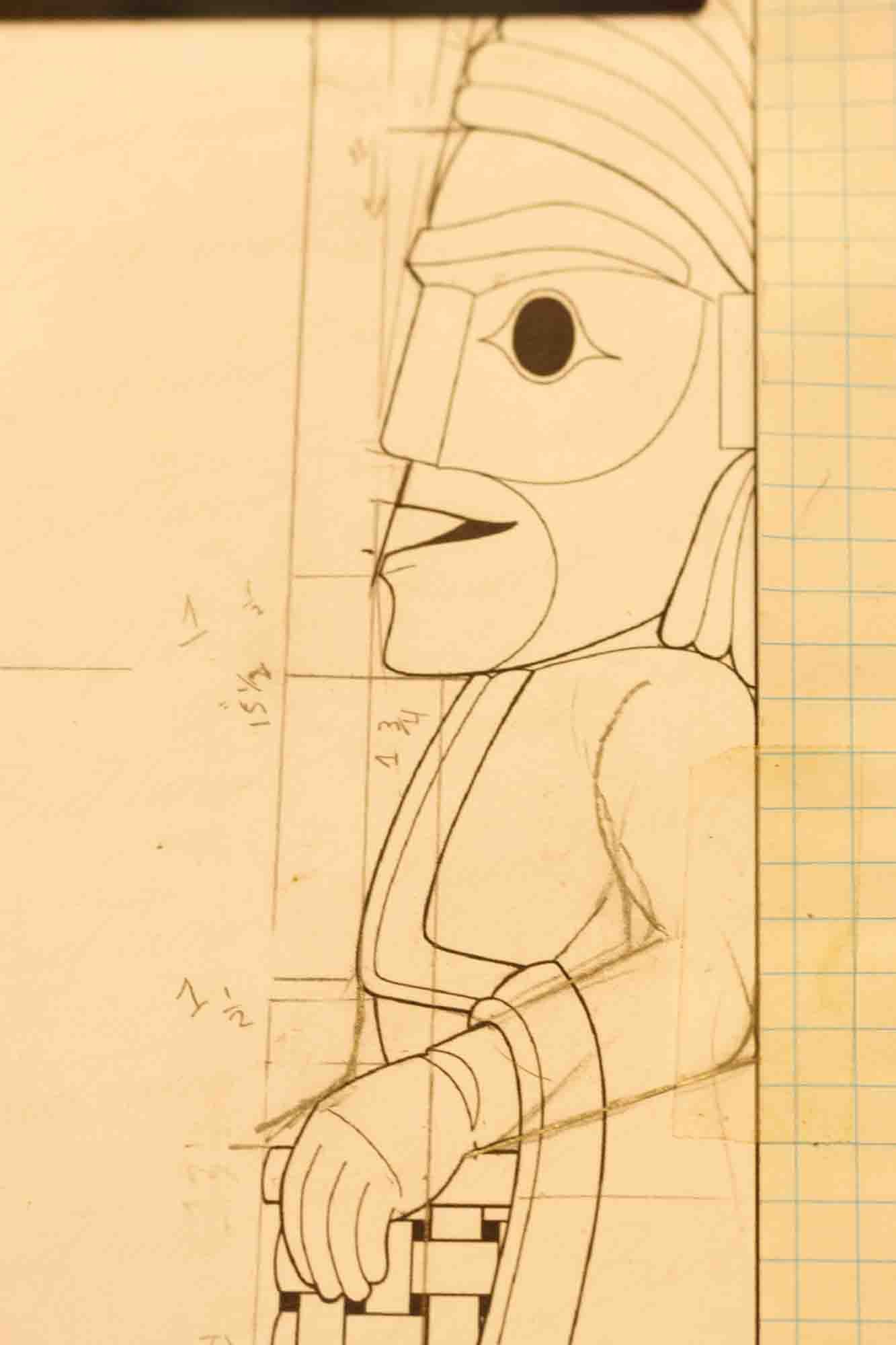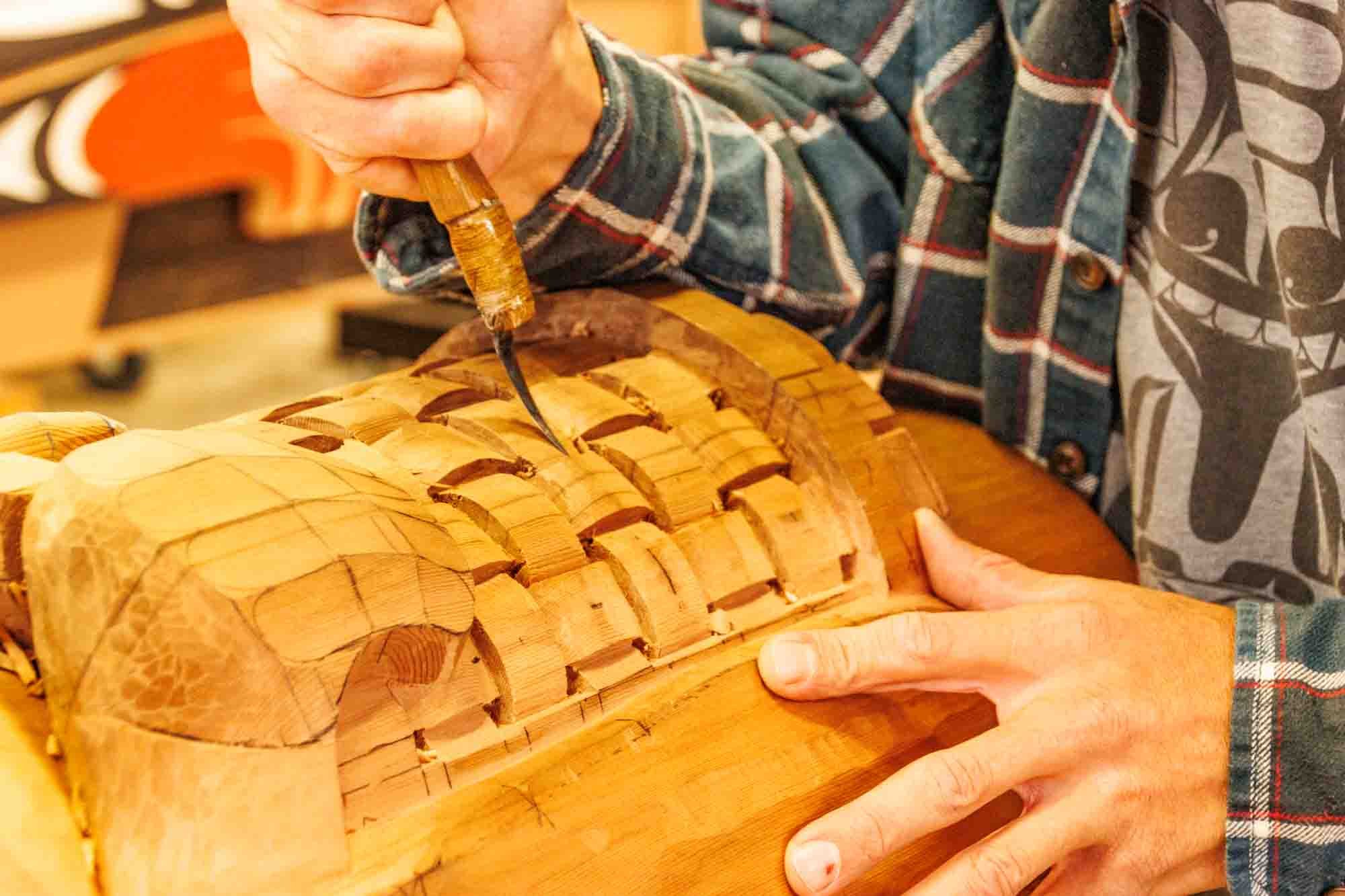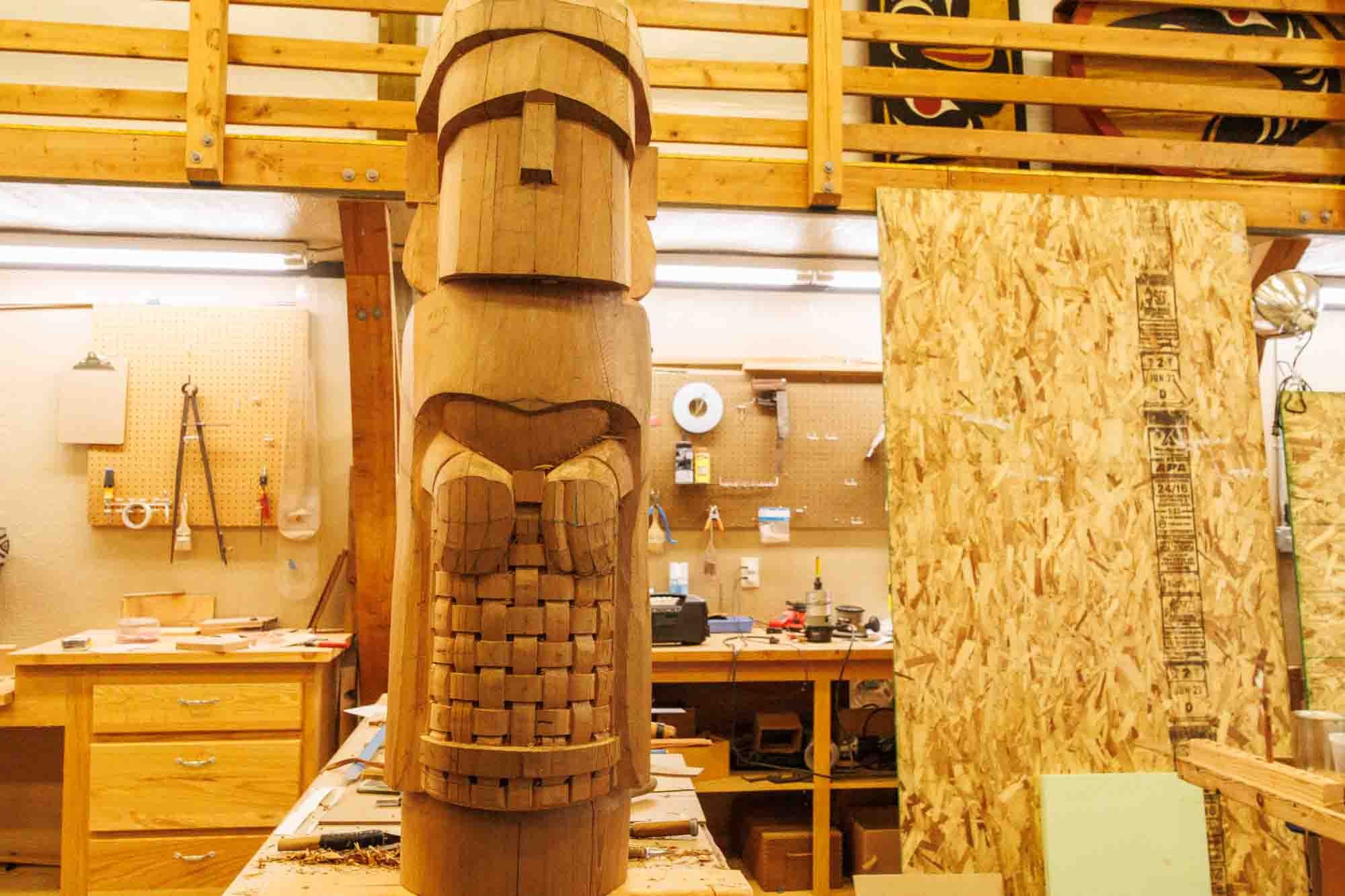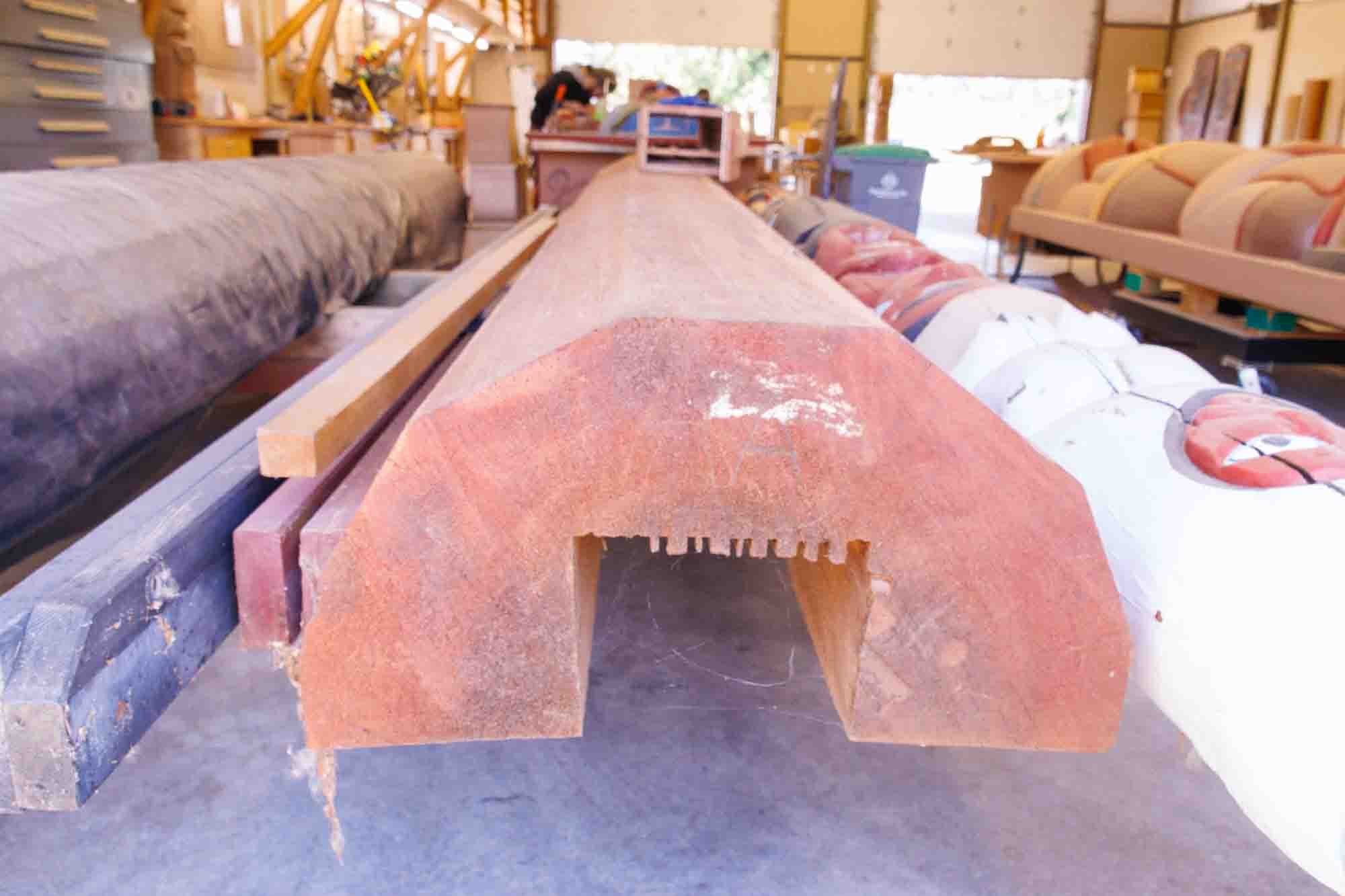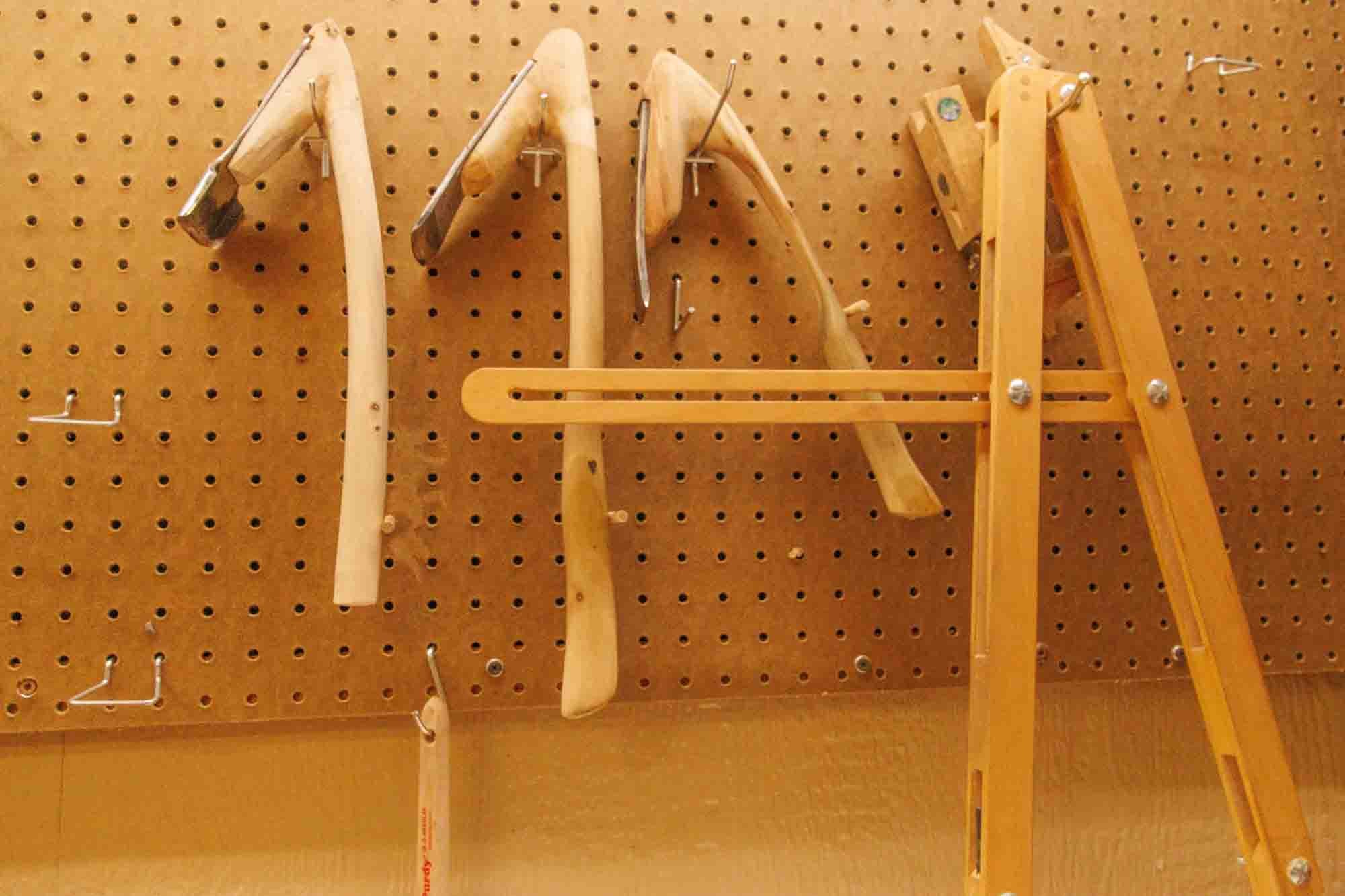Totem Poles of the Jamestown S’Klallam Tribe
I was fortunate to visit the Jamestown S’Klallam Tribe’ House of Myths, the shed where the Tribe’s totem poles, masks, panels and other items are created and restored. The House is located in Sequim near the Tribe’s original village, close to the Dungeness Spit and the waters of the Strait of Juan de Fuca. S’Klallam means “strong people” and Tribal members are proud of their heritage and share it through their totems.
Central Group at the 7 Cedars Casino
The tribal government and operations are located in Blyn, just seven miles east of Sequim. The totems adorn their beautiful campuses from the 7 Cedars Casino to the Longhouse Market and the main Tribal Center where the government and community programs as well as the art gallery are located. There are also two totem poles created at the House of Myths that are located outside of Blyn – a 30 foot totem carved from a 900 year old cedar, sitting in front of the downtown Civic Center that tells the story of “why the sun always shines in Sequim”. The other one is in Port Townsend in front of the Northwest Marine Center, which pays homage to the community’s wooden boats and the artisans who built them.
Dusty Humphries creating a box for deceased tribal members remains
Bud Turner is the carving team’s leader, having replaced Dale Faulstich, when Dale retired in 2016 after 22 years. He created the designs, met with the Tribal Council, measured the logs, scaled the drawings and of course, carved poles, which was his favorite part. Dale retired from the House in 2016 but not before assuring that he had trained carvers to carry on the work. Bud has taken over all of those responsibilities as well as serving as the manager of the program. Dusty Humphries has been at the shed for ten years and learned carving from both his mother, an accomplished carver, and from Dale. Tim O’Connell is the newest carver and is learning under the guidance of Bud and Dusty. With Bud working off site the day I visited, Dusty and Tim educated me about building and restoring totem poles and explained everything in great detail. Just seeing the detail and care of their work to create unique pieces of art gave me appreciation for the respect they have for the important work they are doing for the Tribe and its members.
Totem poles are important symbols for Native Americans as they represent ancestries, histories, people and events. They commemorate the folklore of tribes’ religious, cultural, and traditional beliefs. And they tell stories. The book, Totem Poles of the Jamestown S’Klallam Tribe: The Art of Dale Faulstich, describes the history of most of the totems and the story each one symbolizes. In addition to the totems’ functions, each is a stunning piece of art.
Before carving begins the Tribal Council must approve the concept drawings showing the front and sides of each totem. Once the Council approves the drawings, the logs are ordered. Because green wood is easiest to work with, the carvers begin their work as soon as the logs arrive.
Each totem pole is carved from a Western Red Cedar tree, between 500-900 years old from the Hoh Rainforest or from Canada. Because of their huge trunks, the wood from these trees is resistant to rotting. The bark and sapwood are removed first as they are not good carving wood. A long notch is carved down the back of the log to reduce the stresses that occur as the finished totem begins to dry. The primary tool used in carving is an “adze”. In ancient days stones or shells were used but today blades of steel are more effective. There are different types and sizes of adzes depending on the function required. A variety of other tools including chisels, gouges and carving knives are also used for the detailed carving.
“The Strong People” temporarily stored in the shed.
The log is measured very carefully and a scale drawing is created to serve as the guide for the carvers to follow. A chalk line is snapped down the center of the log’s front to assure the symmetry of the finished totem pole. When the scale drawings are complete the carver pencils in the first broad guidelines of the shapes to be carved. Each figure on the totem is carved on one side at a time to provide an opportunity to identify sculpting problems along the way. At each stage another carver transfers key points to the other side of the log, then begins to match the original model as closely as possible.
“Killer Whale”
Once the figures have been carved, a traditional textured surface is applied. Horizontal elements, such as wings, are carved separately and applied later. Two coats of clear sealant are applied then the traditional colors – reds, blacks and blue-greens are added. According to Totem Poles of the Jamestown S/Klallam Tribe, “The carvers/painters study the brushwork for its effect on balance, composition, and harmony before creating the final sharp lines and striking contracts that add power to the carvings.
Visiting the totem poles at the Tribal Center in Blyn was so enlightening. The center sits on tribal land, overlooking the striking Strait of Juan de Fuca. Walking around the campus, strewn with beautiful carvings, the buildings and space surrounding the totems exemplify the Tribe’s value of caring for and protecting its environment.


